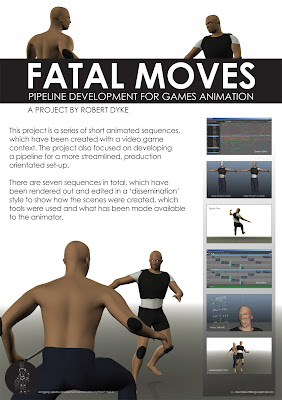I have also designed and had printed both the A1 Poster (which will be mounted onto foam board) and some leaflets, explaining the product. One design focuses on the technology and the other on the project context.
Final Artefact - LINK
Animation & Rigging Show-reel - LINK
 |
| Leaflet One |
 |
| Leaflet Two |







